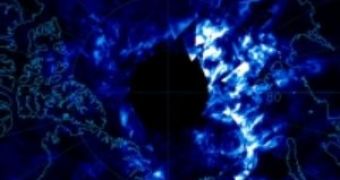Noctilucent clouds, meaning "night shining" are getting bigger and brighter and that's why NASA is trying to find if they're a sign of global warming or unrelated appearances in the night sky in the northern hemisphere.
First observed in 1885, two years after the Krakatoa eruption, the clouds are usually only seen at high latitudes, but in recent years, the evening clouds have been spotted farther to the South and have become bigger and brighter.
Their place of origin is thought to be the upper layer of the atmosphere called the mesosphere, from about 50 km to 80-90 km altitude above Earth's surface. Made of water vapor and ice crystals, 20 to 100 nanometers in size, they usually appear in summer above the North Pole and also in the South Pole summer.
Floating higher than normal clouds and even than the ozone layer, they were photographed by the AIM satellite over North Pole, on June 12 this year and are so bright that they rival the other northern lights, the Aurora Borealis.
"They're gorgeous, and there are more of them now than before," says James Russell, principal investigator of NASA's Aeronomy of Ice in the Mesosphere (AIM) mission that tries to explain these phenomena and possibly link them to global warming.
No precise explanation was ever given regarding their formation, some theories stating that cosmic dust, or debris from burned-up meteors, seed the ice particles and make them shine, which would not explain the increasing frequency of their appearance.
The fact that they're getting brighter is also a mystery and is thought to be caused by either larger or more numerous ice crystals, suggesting a rise in moisture content at those altitudes.
Scientists await preliminary data from the AIM satellite, which will gather information on the particles in the clouds at the edge of space and the chemistry involved in forming the clouds and transmit them for the first time next month.

 14 DAY TRIAL //
14 DAY TRIAL //